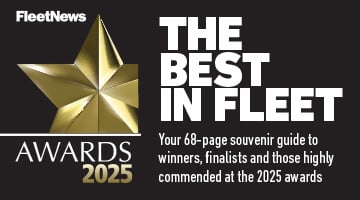Fleet management was also a whole different ball game. Technology has come on in leaps and bounds and 20 years down the line, the days of paper invoicing and hefty ledger files have gone for many.
Online management systems are springing up in fleet offices all over the country but companies considering a new software package to manage the fleet may be unsure where to start.
The first step is to know what to look for in a software system and to be aware of what to avoid.
Choosing a system is about more than just cost – the system must offer a range of functions and some are designed for large scale fleets, others cater for the sub-100 group.
Bill Davies, head of sales and marketing at Trace Systems, trains, develops and supplies software systems to fleets.
He believes fleet decision-makers should arm themselves with a list of questions before visiting a potential supplier (see table A).
Davis recommends speaking to current users of a system, if at all possible. The supplier should be able to provide this information prior to purchase.
The supplier should also be able to provide training on the software, free or for a pre-agreed charge. Either way this will help get the system up and running.
Managers need to ask whether training is continual and if there is a back-up support system if problems arise in the future.
Before opting for a system, a demonstration of the product and what it can do for an individual fleet is vital.
The demonstration will show how easy it is to navigate, the simplicity of the screen layout and functions which can be accessed.
When watching a demo, Davis says that fleets need to ask a series of questions (see table B).
Again, while watching a demonstration, fleet decision-makers should ask the supplier to perform a range of different tasks, including creating purchase orders, invoices and reports.
‘Check that the full system is viewed and that it meets all needs and all of the prices are understood now and year by year,’ Davis added.
The true cost of the system, including future updates, staff training and integration, will play a part in determining which software is chosen.
‘System prices vary widely so cost each system to do what is required and give the training needed.
‘Compare the total costs, including set up, training, annual maintenance, upgrades and new versions with an evaluation of the benefits to the company.
‘This will show cost level is worthwhile for the company, Davis said.
It is important, too, to consider how the system will help the fleet department rather than the IT helpdesk or the human resources staff.
Davis said: ‘Other staff members are not running the department or trying to do the fleet decision-maker’s job. However, if they have to support it and its interface with other systems, clearly they need to be in agreement with and support the system selection.’
He added an important tip for any fleet manager: ‘There is one acid-test question to ask someone who is already running it – would you want to go back to the time before you had the current system?
‘The answer is usually, never. If not, look elsewhere for a system.’
Technology is the way forward but don’t lose that human touch
TECHNOLOGY has its place, but don’t rely on it too heavily or service will suffer.
The leasing industry has been at the forefront of the moves to new technology in a bid to serve fleet customers better. But it seems everyone has now jumped on to the automated, hi-tech bandwagon and human contact has become a rarity.
It has been proved by several companies that online management systems can save costs, improve efficiency and make the whole fleet management process simpler. Going online has changed the way the industry operates.
Andrew Cope, chief executive at vehicle leasing company Zenith Vehicle Contracts, said: ‘Fleet operators can now go through the whole vehicle management process without speaking to anyone. From quoting on new cars, automatically placing orders with dealers, emailing confirmation of delivery details, automatic MOT/service reminders, online approval of repair estimates through to managing disposals, there is very little that the IT/web systems of leading contract hire companies can’t handle.’
At Zenith one person now manages 180 vehicles. Just a few years ago it used to be one person for 125 vehicles.
But despite all the benefits online solutions can bring, Cope believes there is no real substitute for human contact.
‘A driver’s relationship with cars is an emotive one and people often like to talk to someone who can offer advice on the options available and walk them through an increasingly complicated decision. There are also times when human contact is essential, such as when accidents occur,’ he said. ‘The successful company will be one that understands, develops and invests in user-friendly automated systems but at the same time remembers that people do like to speak with others who know what they are talking about.’
Through advancements in technology, fleets are now able to offer drivers more choice and information, but when Zenith introduced its online offering it aimed for a balance between technology and the human touch. Cope said: ‘The aim for us was not to get rid of human contact, as drivers still want to have contact and they still need verbal communication.
‘You cannot get rid of human contact in this industry, as it provides support and backup.’
However, Cope believes the industry is heading towards a greater dependence on technology.
He said: ‘In the future the whole supply network will be driven by technology, platforms will merge together and will be more electronic.’
But whatever does happen suppliers need to ensure that they do not make the mistake of becoming fully reliant on technology and neglect the needs of fleets.
Questions to ask about the system - TABLE A
Does the system:
Questions to ask during a demo - TABLE B
















Login to comment
Comments
No comments have been made yet.